Review for Hidamari Sketch x Honeycomb
Introduction
This is actually where I began my journey through Hidamari Sketch. The first three seasons were either not streamed to the UK, or I simply missed my chance to watch them, so when the fourth, and to date final season was streamed, I took my chance to find out what all the fuss was about. I found a slice of life show that I quickly fell in love with, even though most of the running gags went over my head at first. It was only subsequently that MVM licensed the first season, and most recently I went and imported the rest. I then went back to the start and worked my way forward through the series. Now, I’m finally back where I started, full circle, and I get to see if Hidamari Sketch is just as funny the second time around, and with the added benefit of having watched the rest of the series.
Hidamari Sketch is a slice of life show, random vignettes in the lives of six girls who together attend the Yamabuki art school. A year has now passed, and Yuno and Miyako are starting their second year, while Sai and Hiro are on their final year. Two new first years arrive, Nazuna and Nori. They move into Hidamari apartments as well, and now all six live directly opposite their school. One of their teachers is the flamboyant Miss Yoshinoya, who loves to cosplay for her class, something the elderly principal of the school frowns on. The show follows the group of friends as they move towards their dreams of becoming artists.
Sentai Filmworks present 12 episodes across two DVD discs thus.
Disc 1
1. May 6th~15th: Little Japan, Where Are You Going in Such a Hurry?/May 16th~18th: It’s Jumbo-kaido Everywhere
2. May 18th~19th: Lady Yuno From Above
3. August 31st: The Last Visitor of Summer Vacation/September 1st: Rules of Evacuation
4. September 15th: A Shutter Chance Victory! Miyako Will Win!
5. September 17th~19th: Nazuna’s Cooking/September 28th: Rescheduled at Midnight
6. September 25th: Talking Sketch/September 29th~30th: Hiro
Disc 2
7. October 5th~6th: Split Over a Pamphlet Art Contest/October 6th~8th: A Secret Date
8. October 11th~30th: The Terror! Preparing for the Yamabuki Festival/November 3rd: Eerie! The Day of the Yamabuki Festival
9. November 10th: Smiling Back
10. December 2nd: An Educational Snowball Fight/December 15th: Hidamari’s Cheerleading Squad
11. December 22nd: So You’re a Big Sister/December 21st~24th: A Song I Vaguely Remember
12. December 31st~January 1st: A Year Come, A Year Passed
Picture
Hidamari Sketch is presented on these DVD discs in 1.78:1 anamorphic NTSC format. The image is clear and sharp throughout, with strong and consistent colour reproduction, and given SHAFT’s particular style of animation, a minimum of digital banding, even on DVD. This is a SHAFT animation, and it bridges the gap between the all out visual gag-fests of Pani Poni Dash and Negima, with the more restrained storytelling of Bakemonogatari and Madoka Magica. With Hidamari Sketch, the animators stick to a set style, a restrained and pastel palette, and avoid trying anything and everything to make a visual impact. But the use of gags, short-cuts and visual tricks is still more prevalent. One example is Yuno’s hairclips. She wears her hair tied back with cross shaped hairclips, and it isn’t long before the animators simply put a cross on screen when she’s speaking, the same with Hiro’s wavy hair, and Sae’s glasses. It’s generally an enjoyable viewing experience the further you go into it, but it takes a while to get used to the show’s animation style.
Sound
Hidamari Sketch gets a DD 2.0 Japanese audio track and in a sign of its more recent vintage, on this DVD release, the subtitles are locked during playback. There’s no problem with the audio, the characters are ideally cast, the dialogue is clear, the music suits the show, and the stereo gives the show a decent amount of presence. The subtitles are accurately timed, and this time I had no issues with the translation, or typos.
Extras
You get 2 discs on either inner face of an Amaray style case. You get static menus, jacket pictures, and translated English credits after each episode.
Disc 1 autoplays a trailer for The Anime Network on Roku.
You get the textless credits and trailers for Angelic Layer, Windy Tales, Sakura Trick, and Guardian Ninja Mamoru.
Conclusion
Given all of the Hidamari that I’ve reviewed to this point, you should be fully aware of what you’re getting by now, gentle slice of life comedy that revels in the friendships between six likeable and diverse characters, the cute quirkiness that makes them so appealing, and the slightly askew sense of humour that is Hidamari Sketch’s trademark. If you liked the first three series, you’ll like this too.
Yet I have to consider the question as to why I fell in love with this show out of context, and then chased up the first three series, liking them and enjoying them, yet somehow failing to recapture just what it was that drew me to this fourth season in the first place. Watching it again now, I find that I still do think that it’s the best of Hidamari Sketch, made even better by now knowing the context behind the characters, the shared history that they have.
You have three previous seasons of character development, and you have three previous seasons of running gags, and all of that is distilled to its purest essence for Honeycomb. The jokes hit harder and more often. But Honeycomb does things a little different as well, which makes it stand out even more. The first thing is that it is the only series that unfolds in chronological order. The first two seasons were random scattershot moments captured through Yuno and Miya’s first year at Yamabuki art school. The third season was a strange sort of hybrid, with a linear progression of the start of their second year, to make introducing the two new characters of Nori and Nazuna easier, as well as some random flashbacks to the previous year. This final season sees it all progress chronologically, and that makes its storytelling stronger and more compelling.
There is actually a storyline in a slice of life comedy, and that is the second change, and the one that cements Honeycomb as the strongest season of Hidamari Sketch. It’s Yuno and Miya’s second year, which also means that it is Sae and Hiro’s final year at high school. That fact hadn’t quite sunk in when it came to Hoshimittsu, but in this final season, as the months pass, and the end of the year comes closer, it also becomes clear that the surrogate family at the Hidamari Apartments is about to break up, and there is an increasing sense of melancholy and reflection as the episodes progress.
Smiling Back is a great episode in this regard, as the art students re-work the Game of Life to better reflect their lives and ambitions, and when they come to play it, it winds up referencing events in earlier seasons. And with Sae and Hiro making decisions about their futures, their careers, and the inevitability of saying goodbye to their friends, it’s no surprise that you’ll be laughing at the final episode, albeit with a heavy heart. It’s the perfect end for a warm enveloping hug of a show.
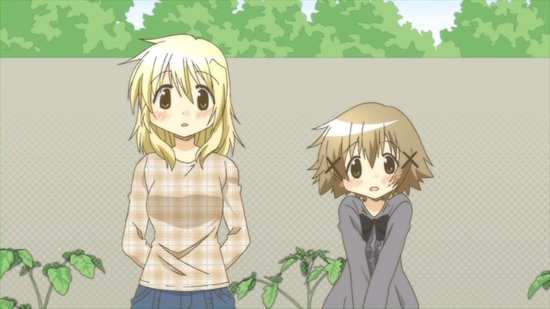
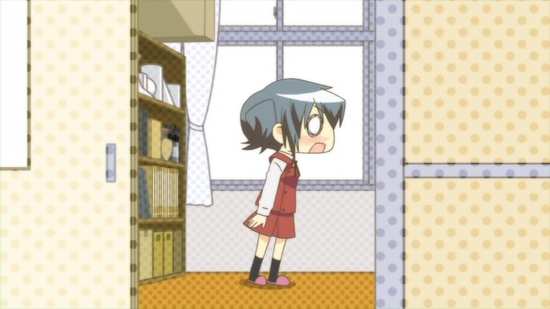
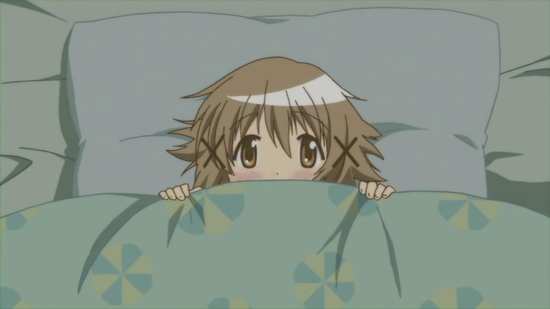
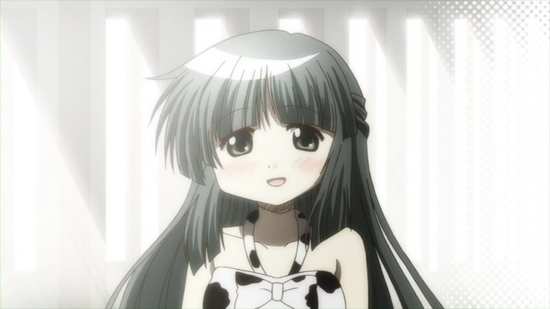
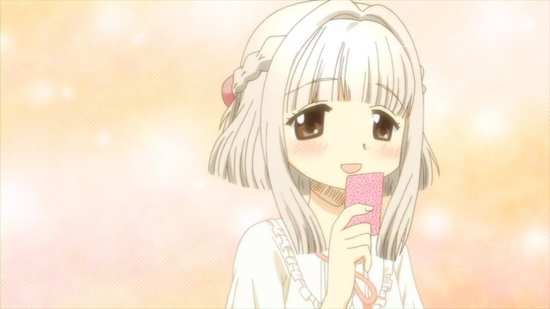
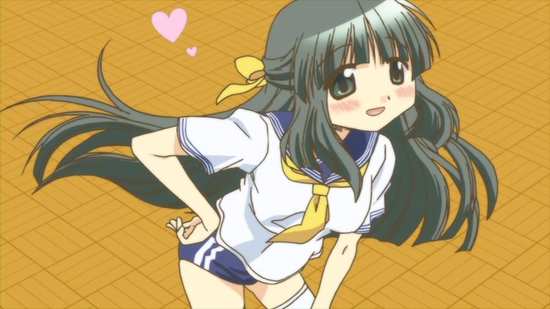
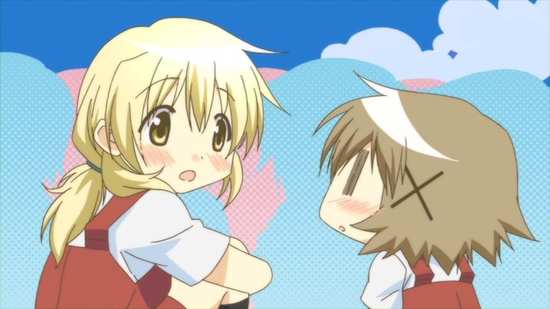
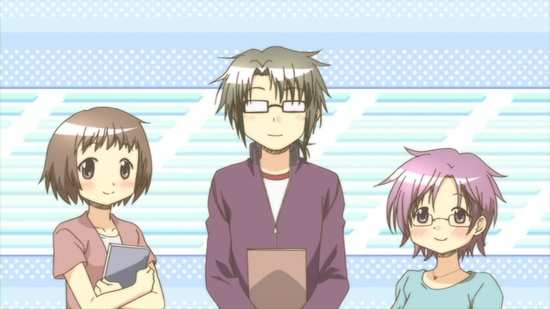
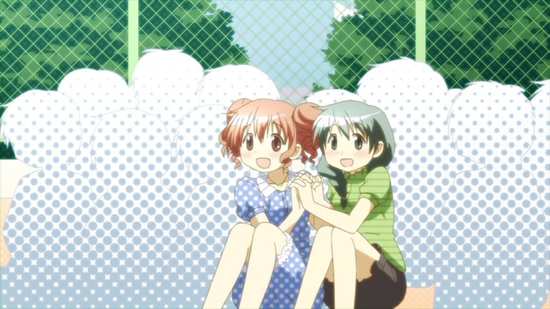
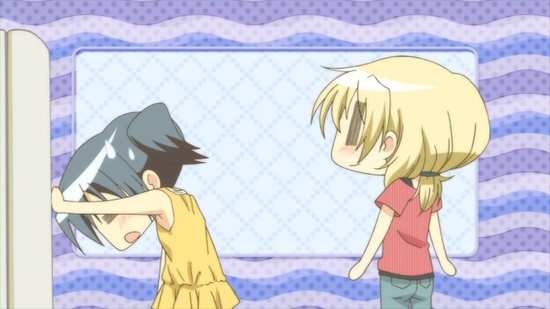
Your Opinions and Comments
Be the first to post a comment!